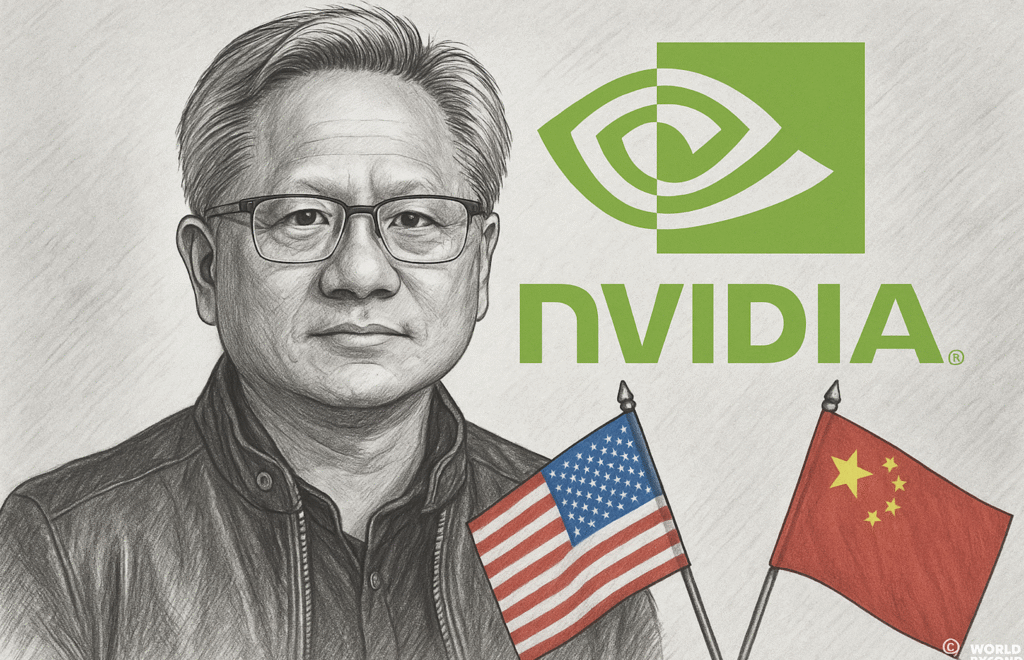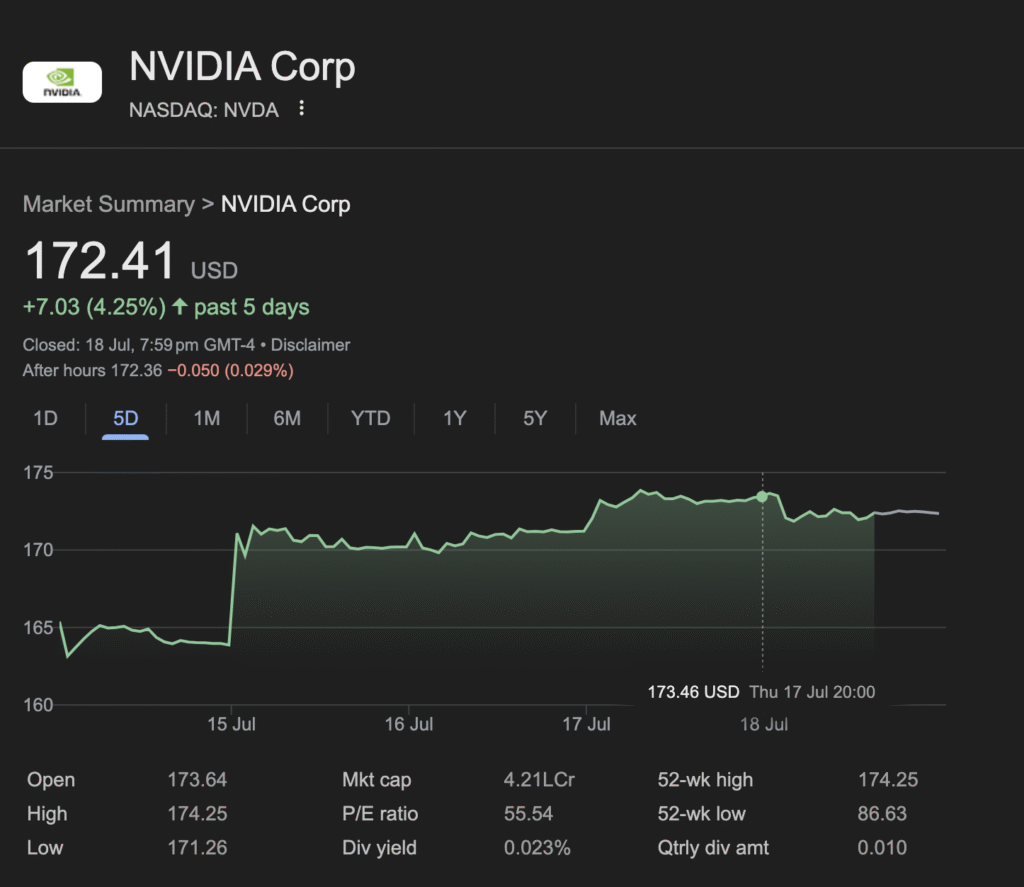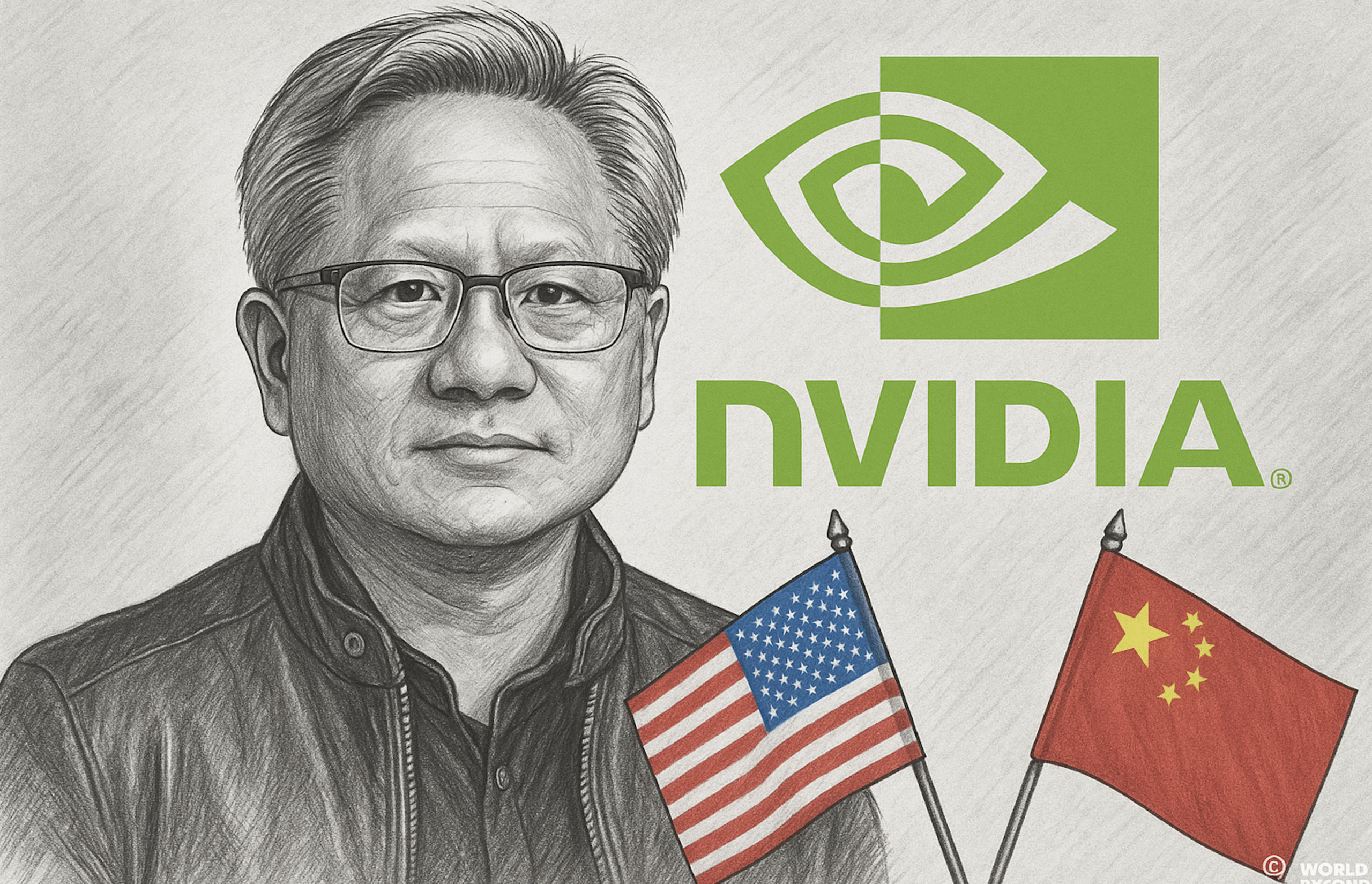As Tech Tensions Ease, Nvidia Emerges the Real Winner

Nvidia’s Win in the US-China Chip War: A Turning Point for Global Tech
As the US-China chip war begins to ease, one tech giant stands out as the clear winner — Nvidia. The once-escalating battle between the world’s two largest economies over semiconductor dominance is now shifting into a more collaborative tone, and Nvidia US-China chip war discussions are leading headlines globally.
What Sparked the US-China Chip War?
The chip war between the US and China began as both nations aimed to secure leadership in the advanced semiconductor industry. The US imposed export restrictions on China, especially on AI and GPU technology, impacting companies like Huawei and SMIC.
Nvidia, heavily invested in GPU production and AI chips, was caught in the crossfire — especially with restrictions on exporting its powerful A100 and H100 chips to Chinese buyers. But rather than retreating, Nvidia adapted quickly.
How Nvidia Navigated the Tensions
Nvidia demonstrated remarkable strategic flexibility. It began developing China-specific chips, such as the A800 and H800, complying with export restrictions while continuing to serve the massive Chinese market.
This smart move allowed Nvidia to: Continue revenue growth in China, Avoid direct geopolitical conflict and Maintain strong partnerships in Asia.
Nvidia US-China Chip War
Easing Tensions = Bigger Wins for Nvidia
Now, with diplomatic signals indicating a cooling of the tech war, Nvidia stands to benefit more than ever. Several factors are working in its favor:
- Pent-up demand for AI and data center GPUs in China
- The global AI boom boosting chip investments
- Less pressure from regulators as relationships stabilize
Recent backchannel talks have encouraged more open tech exchanges between the two nations — especially in AI and semiconductors. Nvidia’s unique position allows it to capitalize on both markets without picking a side.
The Bigger Picture: What This Means for Tech
This development is more than just a win for Nvidia — it signals a major turning point in the global semiconductor race. It shows that:
- Smart adaptation wins over confrontation
- Companies that innovate under pressure thrive
- The Nvidia US-China chip war outcome could reshape tech alliances for years to come
Current Nvidia Stock Performance

Nvidia is trading at $172.41, showing signs of stability after recent volatility.
Nvidia’s Advantage in the US-China Chip War
Revenue Boost: Regaining access to China—a market that accounted for ~$17B revenue—could easily unlock $10–20B more in chip sales.
Ecosystem Advantage: Nvidia’s AI software ecosystem, including CUDA, remains preferred even amid rising local competition.
Strategic Diversification: The concurrent rare-earth and chip deal underscores a deeper US–China trade détente—boding well for global supply chains.
The Road Ahead
Short-Term: Expect chip license approvals, a ramp-up in H20 shipments, and solid momentum into Q3–Q4 2025.
Mid-Term: Nvidia plans new export-compliant AI chips (like RTX Pro/Blackwell variations) tailored for China.
Long-Term: The tech detente could expand into other sectors—software, AI safety regulations, even semiconductors supply chains.
“These geopolitical shifts are reminiscent of how India responded to NATO’s criticism—both signal growing national confidence.”
Analyst Outlook
Analysts are already raising price targets (e.g., Needham from $160 to $200), citing China’s reopened market and Nvidia’s competitive edge.
Still, tensions persist: experts warn this dipole détente may be fragile and subject to geopolitical shocks.
Key Takeaways
Policy winds have turned, with both the US and China lifting mutually beneficial trade restrictions.
Nvidia is uniquely positioned to benefit—with increased revenues, stronger market position, and competitive ecosystem.
The future looks bright, though watch for geopolitical surprises and new rounds of policy shifts.
As the geopolitical ice thaws between the U.S. and China, Nvidia finds itself in a position of unprecedented opportunity. The easing of trade restrictions not only fuels its growth in AI chip exports but also reinforces its dominance in the global semiconductor race. With investor confidence rising and strategic leadership under Jensen Huang, Nvidia appears poised to shape the future of AI. The tech giant isn’t just riding the wave — it’s helping to create it.
Final Thoughts
The softening of the chip war has turned into a golden opportunity for Nvidia. As one of the world’s leading AI and GPU companies, it is now not just a player — but a tech power broker between East and West. In the ongoing geopolitical chess game, Nvidia just made a checkmate move.
“…Nvidia’s dominance, similar to how Liverpool is betting big on young talent like Hugo Ekitike, signals a major investment trend…”
“In many ways, Nvidia’s rise mirrors how top teams like Liverpool and players such as Ekitike are investing big to stay ahead—see Liverpool’s bold €90M move.”
🌐 Global Spotlight: NATO’s growing unease over India’s deepening trade with Russia — what it signals for future diplomacy and global alignments.
Nvidia is set to resume H20 GPU sales to China, a move tied to broader U.S.–China trade discussions over chips and rare earths, explore this Reuters article on Nvidia and AI.
For Broader Sports & World Updates
While you’re catching up on our in-depth match coverage, don’t miss the latest diverse headlines from World Beyond News, where insightful stories beyond cricket are just a click away:
👉 Explore more at World Beyond News to stay informed on global affairs, sports, and trending events around the world.

World Beyond News is your go-to source for global news, trending updates, sports coverage, and fresh perspectives on current events. Stay informed with truth and clarity.

